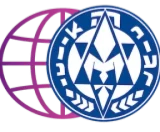By: Diego (Charno) Charnovich.
These days we celebrate one of the happiest chagim of our calendar: PURIM.
This unique festivity became a real carnival in Israel, both for the more religious sectors as well as for the secular ones. Unlike other chagim in Israel, where in-home large family feasts are common, Purim takes the streets of all the cities across the country, with large
parties, disguised people everywhere – whether in the office or the Shuk – celebrating once again that we managed to avoid the genocide of our people.
As in every Chag, Purim is characterized by different events that marked our history, and from it derive various human and Jewish values that form a part of our individual and collective identity, and of course, our identity as chaverim of Hanoar Hatzioni.
In addition, we can always relate anachronistic events that reoccur throughout history to the present day. When referring to Purim, some claim that there is a parallelism between the current conflict concerning the Iranian nuclear program and the existential danger of the state of Israel and the events that took place during the Persian Empire rule. I would argue that apart from Iran being geographically and culturally related to the Persian Empire, there is no substantial linkage between the two occurrences: during the Persian Empire we were scattered in the Diaspora and subject to the ruler’s whims, and today we have our national homeland, which puts us in an entirely different situation. Furthermore, I do not see, today, an imminent existential threat as some factors and political sectors in the Israeli society attempt to portray.
One of the precepts of the Chag mentioned in Shulchan Aruch is listening to the reading of “Megillat Esther”. Although Purim is a Chag d’Rabanan and not of the Torah, it grants high importance to the precepts. Hence, even the reading of the Torah is postponed in order to listen to the reading of the Megilla.
An aspect that I found interesting since I was a child is why the Megilla is named after Esther and not, for instance, after Mordechai, who was the leader and the representative of the Jews in Persia and refused to bow to Haman. The name Esther comes from the Hebrew word “Nistar” which means “hidden”, and Megilla comes from the word “Giluy”, which means “reveal”. Therefore, Megillat Esther can be translated as “Revealing the Hidden”. One of the peculiarities of Megillat Esther is that it does not mention God by name even once, yet according to many scholars and Rabbis, God is present throughout the whole story.
I have always liked the theory which suggests that the “hidden” was in Esther (not only regarding the name’s etymology but also the person herself): a silent heroine who stirred the course of the Jewish people’s lives and achieved the miracle of reversing the decree of King Ahasuerus.
In my perception, the values derived from the Chag are related to our ideological values and the vision of Hanoar Hatzioni. One of these values is the value of continuity. An essential part of the fact that today I can write this article, and that you are able to read it on the other side, is thanks to the educational continuity of cultural transmission that has been developing for thousands of years. This reflects the importance of transmitting this set of values to ensure the continuity of our culture and ideas. This is what our ancestors did, what our parents did with us and what we must pass on as Manhigim, both to our chaverim of the Tnua, as well as to the next generations. An additional value related to the miracles and feats of our people is the value of leadership. In this case, besides the typical, charismatic and strong leader that was Mordechai, a new type of leadership appears: more silent, but equally important in the image of Esther, who risked her life to achieve the continuity of the Jewish people and culture in Persia. I cannot fail to mention some values of the vision of Hanoar Hatzioni, which also derive from the Chag, such as the sanctity of life, freedom, mutual aid, solidarity and activism.
To summarize this article, I encourage you to also “REVEAL THE HIDDEN” in all aspects of life and the Tnua. Be chalutzim: do not settle only for the visible aspects. The Tnua is not only the act of a peula and following the tochnit chinuch literally but also finding the
added value of what we do, finding other points of view to the topics we deal with, generating doubts and dialogue, serving as a personal example in every given moment and constantly searching the way to become better Manhigim. Often, the most productive
learning process is in the smallest things that occur throughout our life experiences in the Tnua, whether it is a talk with a madrich, a unique event in the Machane, or simply sharing laughs (or occasionally cries) with our chaverim.
Use the joy of this Chag to continue transmitting these highly important values that characterize us as chaverim of Hanoar Hatzioni.
Chag Purim Sameach y Chazak VeEmatz!










